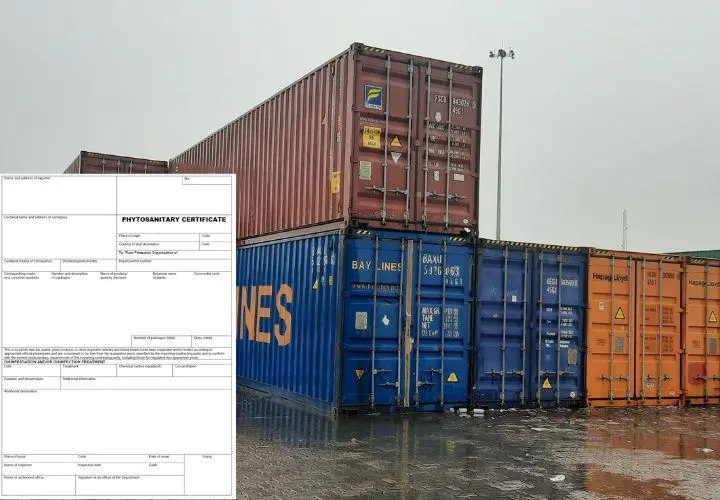A fumigation certificate, also known as a pest-control certificate(best pest control service), is a document that confirms that every piece of wooden packaging in a cargo shipment has been fumigated.
Before being shipped internationally, certain raw wood products, such as wood pallets or boxes, wool, dunnages, and drums, must be sterilised or fumigated. Particleboard (chipboard), cardboard, and other manufactured items composed of wood are excluded, nevertheless.
For foreign or maritime freight shipments, a fumigation certificate is required. If you don't follow these instructions, your cargo could not be sent, be liquidated, or be quarantined when it gets to other ports.
Why is a Fumigation Certificate Required?
In evaluating phytosanitary procedures for wooden packing, the International Standards for Phytosanitary Measures (ISPM 15) were introduced in 2002. Previously, a complicated array of limitations demanded by many agencies hampered international trade. All exporters must adhere to the ISPM 15 regulations, which outline a standard designed to stop the spread of vermin by treating all wooden packing.
These regulations were put in place because insects and fungus that live in wood transportation logs can spread into wetlands and forests, destroying trees and other plant life. To simplify the import and export of commodities, millions of wood pallets are moved globally every day, which presents a significant challenge for the preservation of wildlands.
When is a Fumigation Certificate Required?
Trading partners throughout the world are incorporating ISPM15 into their import laws. In order to create an export plan that satisfies international import regulations, the National Plant Protection Organization of the United States (NPPO) and the United States Department of Agriculture collaborated with the wood packaging material business.
With the help of this initiative, treated wood packing materials for international commerce will be certified. The ability to track items back to their source is a crucial component of compliance with this programme.
Details required for the fumigation certificate
A fumigation certificate for export must include information on the reason for the fumigation service as well as a list of the fumigants utilised. Furthermore, specific information on the duration of the fumigation as well as the temperature range must be provided.
The ISPM 15 acknowledges four distinct methods for removing the potential issues brought on by insects and other impurities found in transporting wood.
Kiln Drying
Kiln drying is comparable to (HT), but it also lowers the wood's moisture content. Pallets are heated slowly inside sizable heating chambers or kilns in a process that removes extra moisture. Since reducing moisture rather than specifically eliminating pests is the goal of kiln drying, appropriate IPSM 15 moisture standards must be observed and recorded. An HT stamp is also included with kiln-dried treated wood.
Heat Treatment
For heat treatment (HT), wood must be heated for at least 30 minutes, or until its core reaches 56 degrees Celsius. A specialised kiln or commercial microwave is used to render wood or packaging made of timber inhospitable for insects. A stamp reading "HT" is seen on treated pallets.
Methyl Bromide
The longest procedure that is considered fit for IPSM 15 is Methyl Bromide (MB). MB, often referred to as bromomethane, is a colourless, odourless gas that has historically been applied to crops as a fumigant and pesticide. Due to its toxicity, it is gradually being phased out of use in general, however it is appropriate for treating wood in a controlled atmosphere.
Dielectric Heat Treatment
Within 30 minutes of the process beginning, the entire wood profile is heated to a minimum temperature of 60 degrees Celsius using a high-frequency alternating electric field, radio wave, or microwave electromagnetic radiation. These pallet manufacturers are required to request NPPO approval. According to industry predictions, this treatment method will spread due to its efficiency and practical advantages.
Export to Australia or New Zealand
Additional considerations are needed when shipping to Australia or New Zealand. The fast spread of brown payment stink bugs (BMSB) throughout North America and Europe prompted the Australasian government to take action to safeguard their ecological balance against insects brought in by imports from certain nations, such as the USA and Europe.
The BMSB high-risk seasons for Australia and New Zealand run from September 1 through May 31 and from September 1 through April 30, respectively.
The burden of responsibility falls squarely on the shoulders of the customer shipping the cargo, and commodities must be designated as Target High Risk or Target Risk Cargos prior to delivery.
Bricks, tiles, and stone are examples of risk cargoes, along with break-bulk items like machinery, equipment, and automobiles. Chemicals, minerals, fertilisers, as well as wood pulp, printed materials, cardboard, paper, and plastics, are all considered High Risk Cargos.
Cargo is subject to BSMB restrictions if it is transported in any of these ways, or if it is shipped to, berthed at, or used as an intermediary in any of the nations on the list designated as high risk. These have been established as the minimal standard of care for HT, MB, or sulphur fluoride fumigations.


